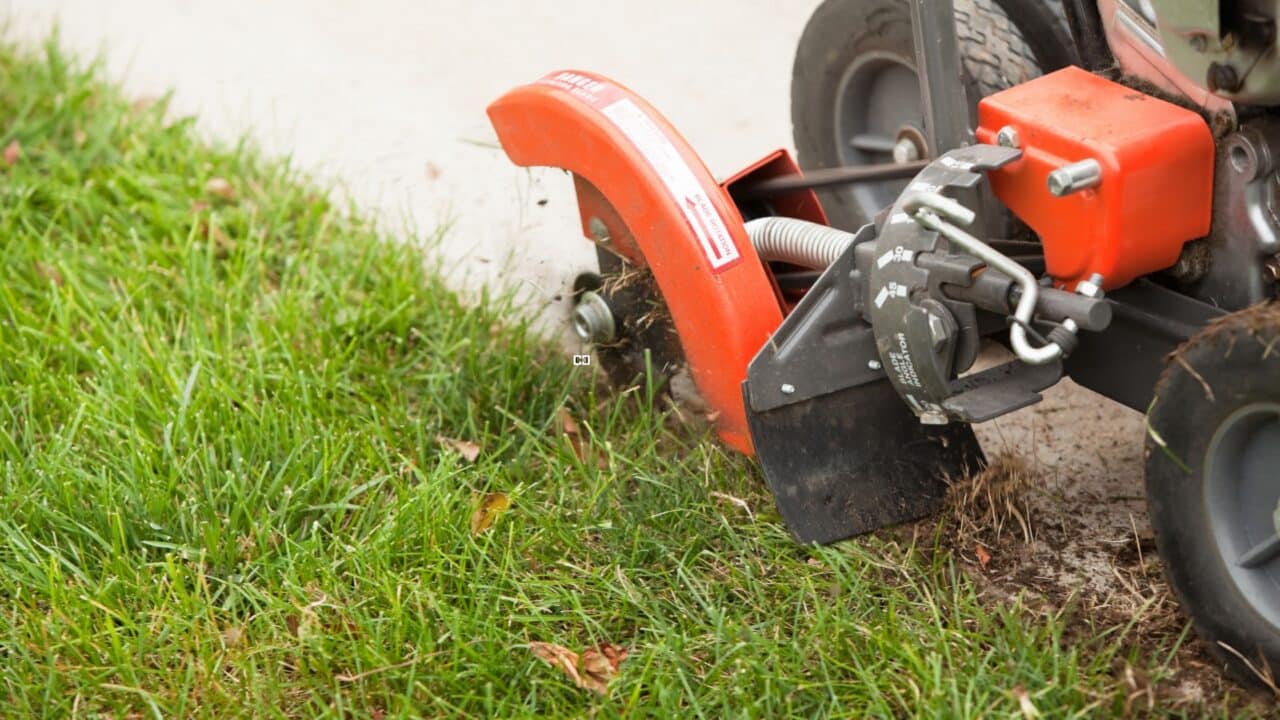The best edging material for your yard depends on your budget, style, and how permanent you want the solution to be. Steel offers clean lines and durability, stone adds a natural look, while plastic is affordable but less long-lasting. Each option has trade-offs in looks, price, and installation effort.
What Type of Edging Is Right for Your Yard? (Pros & Cons of Common Materials)
A clean edge between your lawn and garden beds doesn’t just look great — it makes maintenance easier, prevents mulch from washing into the grass, and adds serious curb appeal.
But with so many edging materials to choose from, how do you pick the right one?
In this guide, we’ll break down the pros and cons of the most common landscape edging materials, including steel, plastic, concrete, stone, brick, and natural trench edging. We’ll also share some homeowner-tested advice on what works best in Northeast Ohio yards — especially where freeze-thaw cycles and seasonal maintenance matter.
Why Edging Matters (More Than You Think)
Good garden edging helps:
-
Keep mulch, gravel, or soil contained
-
Prevent grass and weeds from creeping into beds
-
Make mowing and trimming easier and cleaner
-
Define space with structure and contrast
-
Add resale appeal by making your yard look maintained
Whether you’re creating a modern minimalist look or a natural cottage garden, the edging material sets the tone.
1. Steel or Metal Edging
Pros:
-
Sleek, minimal, and almost invisible when installed correctly
-
Extremely durable and long-lasting
-
Flexible enough for curves
-
Easy to mow against — no trimming needed
Cons:
-
Higher upfront cost
-
Can rust over time unless powder-coated
-
Requires careful installation to stay level and secure
Best for: Modern or formal landscapes, low-maintenance homeowners, and those who want a permanent solution with clean lines.
2. Plastic Edging (Roll or Paver Style)
Pros:
-
Inexpensive and easy to find
-
Lightweight and DIY-friendly
-
Flexible for curved beds
Cons:
-
Can heave or pop up in freeze/thaw conditions
-
Looks less refined over time
-
UV exposure can make it brittle
-
May require frequent re-staking
Best for: Budget-conscious projects, quick touch-ups, or homeowners trying edging for the first time.
3. Natural Trench or Spade-Cut Edge
Pros:
-
No materials needed — just labor
-
Looks neat and crisp when freshly cut
-
Blends beautifully into cottage or natural gardens
Cons:
-
Needs to be re-cut several times a year
-
Doesn’t block grass or weeds as well
-
Can be uneven or sloppy if rushed
Best for: Gardeners who love a hands-on approach or want a zero-cost, natural look — great for mulched beds that get regular attention.
4. Stone Edging (Fieldstone, Flagstone, or Cut Stone)
Pros:
-
Natural and timeless look
-
Durable and can last decades
-
Can double as a small seating wall or planter edge
-
Works with most garden styles
Cons:
-
Expensive to source and install
-
Requires a level base to prevent shifting
-
May shift in freeze/thaw climates without a proper gravel foundation
Best for: Homeowners looking for a premium, high-end finish or those with sloped yards needing structure.
5. Concrete Edging (Poured or Precast)
Pros:
-
Very permanent and durable
-
Customizable with color and stamp options
-
Keeps grass, soil, and mulch completely separated
-
Low maintenance
Cons:
-
Higher cost and requires a professional for poured-in-place styles
-
Cracks can develop in freeze/thaw conditions if not installed correctly
-
Can look too industrial for some homes
Best for: Structured landscapes or homes with modern or formal garden designs.
6. Brick Edging
Pros:
-
Classic and versatile
-
Can be laid flat or on edge for a different look
-
Moderate price point with long life
-
Easy to mow against
Cons:
-
May shift or sink without proper base prep
-
Mortared options are harder to repair
-
Weeds may grow between bricks unless sealed
Best for: Traditional homes, vintage garden styles, and DIYers who want a bit of old-school charm.
What About Timber or Landscape Ties?
Wood edging (like pressure-treated timbers or landscape ties) can be appealing for its cost and rustic feel — but in our wet climate, it tends to rot within a few years. Bugs, fungi, and ground contact make even treated lumber a short-term solution unless used above ground or with drainage planning.
If you love the look of wood, consider composite plastic-wood blends or cedar boards elevated above soil contact.
What Works Best in Northeast Ohio edging materials?
With our clay-heavy soils and winter frost heave, the most successful edging solutions locally are:
-
Steel or metal edging for modern, long-term installs
-
Natural trench edges maintained seasonally
-
Stone edging with a gravel base for flexibility
-
Brick when installed with proper leveling and weed barrier
Plastic tends to lift, shift, or degrade in our climate unless maintained carefully. Concrete can be excellent — but only when properly installed to handle movement and drainage.
For many homeowners, a mix of solutions works best: trench edges for the backyard veggie garden, stone or metal up front for curb appeal, and brick around patios or walkways.
FAQ: Choosing Landscape Edging
How deep should edging go into the ground?
Most edging should be 4–6 inches deep to stay stable and prevent grass from growing under it. Steel and plastic styles typically include a buried lip.
What’s the most durable landscape edging?
Steel and concrete edging are the most durable, often lasting 20+ years when installed properly. Stone is also long-lasting but may shift over time.
Is trench edging enough to stop grass?
Not completely. While it creates a clean line, aggressive grass types can creep over the edge without regular maintenance.
How do I prevent mulch from spilling into my lawn?
Use a defined edge at least 2–3 inches above the soil. Metal, brick, and stone edging are especially effective at keeping mulch in place.
Can I install edging myself?
Yes! Many types like plastic, brick, and trench edges are DIY-friendly. Just be sure to prep your base and check for level to get professional-looking results.
Conclusion
Choosing the right edging is about more than just looks — it’s about function, durability, and how much effort you want to put in down the line. Whether you’re looking for clean, modern lines or a rustic garden border, there’s an edging option that fits both your style and your lifestyle.
Still unsure? We can assess your yard’s conditions and help you pick a material that will hold up to the weather — and your mower. Be sure to check us out on Instagram for our latest edging project before and afters.

